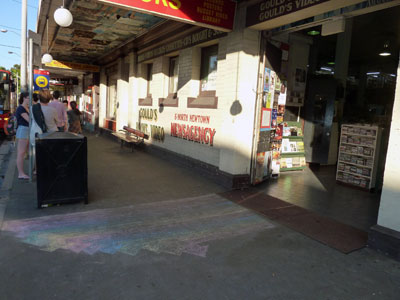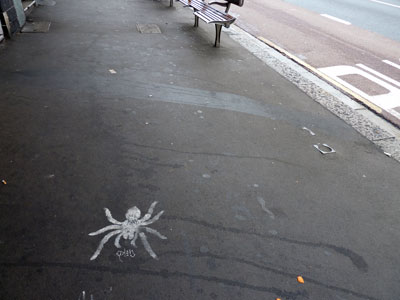This is a story about vindictiveness and vindication. On the face of it, it’s about gay pride and support for the gay and lesbian (LGBTQI) community. But it’s also about me, me, me and my Pavement graffiti project.
It all started with a pedestrian crossing at Taylor Square on Oxford Street that the City of Sydney Council painted in rainbow colours for the 2013 Gay and Lesbian Mardi Gras in February-March. It was supposed to be temporary but Sydneysiders wanted it to stay.
The State Government declared it was a safety hazard and during the night on 10 April it sent in a crew to rip up the rainbow and repave the road. This is where the vindictiveness comes in. Many people saw this action as part of an ongoing campaign by  State Premier Barry O’Farrell to ‘Get Clover’ – Clover Moore, that is, the longstanding Lord Mayor of Sydney. Asphalt used as a political weapon. Here’s a newspaper report and video of the dastardly deed.
By the end of the week there were rainbow ribbons and flags flying around Taylor Square to mark the passing of the crossing.
But even more astounding, in protest against the Government’s action, a viral campaign to draw DIY rainbow crossings in chalk took off in Sydney, around Australia, and in other parts of the world.
Around where I live you can’t walk up the street without tripping over a rainbow.
And this is the vindication part. ‘Pavement graffiti’ may seem like an obscure and even unworthy subject on which to base a PhD and many people just don’t get it. But in the very week that I finish writing the thesis, along comes this hotly debated story to demonstrate that PAVEMENT MARKS MATTER. (It’s also left me wondering whether I should open up the thesis again and add an epilogue about rainbow crossings.)































